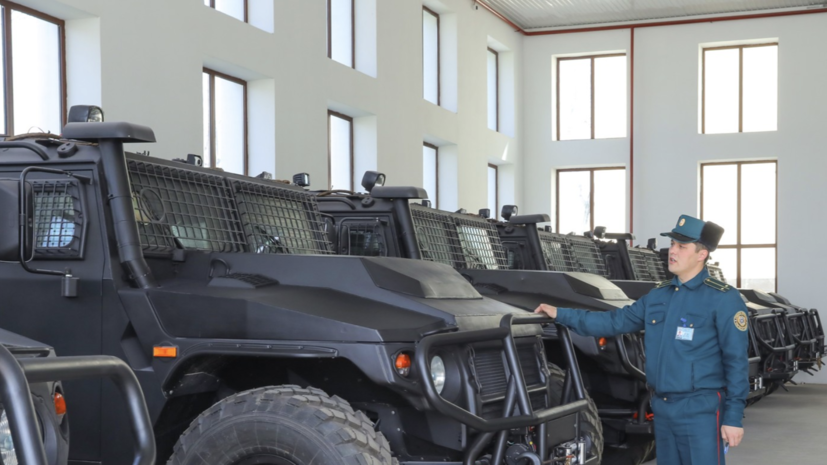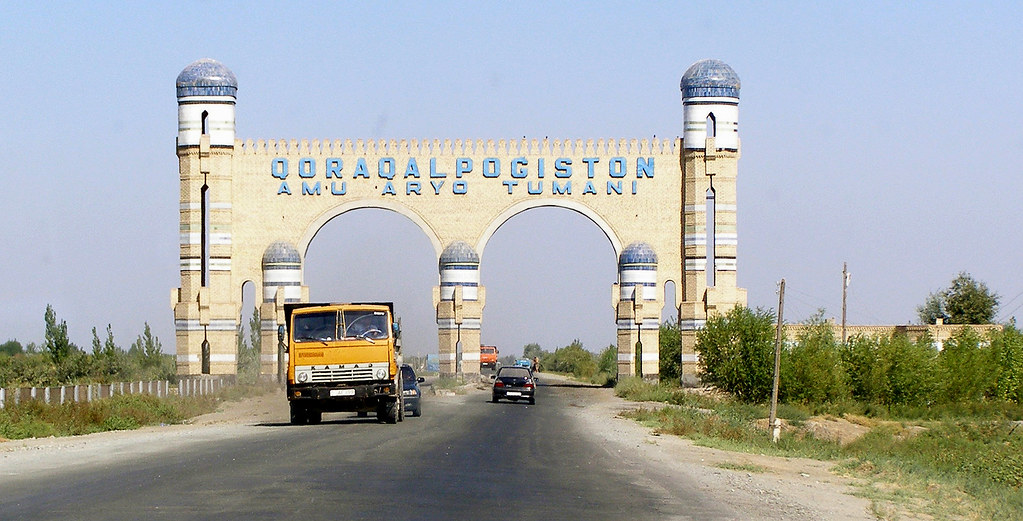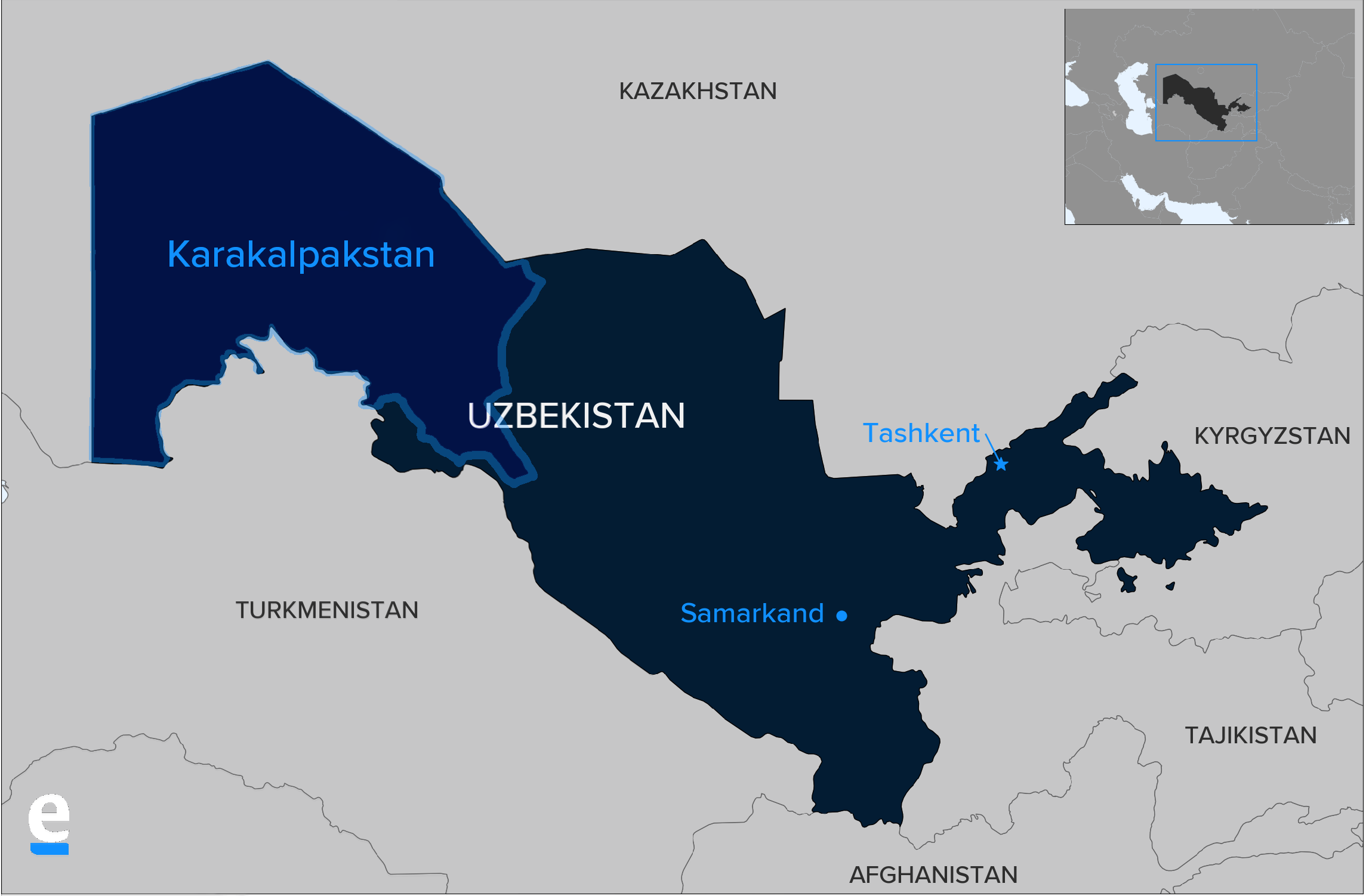RIO DE JANEIRO, BRAZIL – The Uzbek Interior Ministry dispersed an illegal rally in the western region of Karakalpakstan on Friday that they claim was organized in response to a “misunderstanding of the constitutional reforms that are conducted in the republic.”
That gigantic but sparsely populated and largely impoverished swath of this doubly landlocked country is formally an autonomous republic with the constitutional right to secede via a referendum, though a draft of Uzbekistan’s many proposed legal changes suggests that it’ll lose that mostly symbolic prerogative and stipulate that its constitution mustn’t contradict national laws instead of only just not contradicting the constitution as is now the case.
Additionally, a local blogger was reportedly detained too, which altogether prompted unauthorized protests in the capital of Nukus.
Previously stable Central Asia has been on edge since the unexpected Hybrid War of Terror on Kazakhstan broke out in early January, during which time terrorists almost took control of this former Soviet Republic prior to a decisive Russian-led CSTO peacekeeping operation saving the region’s largest country.
Moscow concluded that regional terrorist networks were involved in this attempted regime change operation, but little else has been officially revealed thus far about the origin of that incident. In any case, it drew renewed attention to the pernicious role of non-state actors operating between Central Asia and Afghanistan, the latter of which is getting messy again and thus catalyzing closer military integration between those former Soviet Republics – including Uzbekistan—and Russia.
Having explained the backdrop to Friday’s unrest, it’s now time to say a few words about Uzbekistan. This country used to be casually described by Western observers as “the North Korea of Central Asia” because former President Islam Karimov pretty much closed it off from most of the world.
His successor, President Shavkat Mirziyoyev, has gone in the opposite direction by gradually opening it back up to the international community. This has seen some cosmetic political reforms along with comparatively more substantive economic and socio-cultural ones related to positioning Uzbekistan as a regional connectivity hub and the role of religion in everyday life respectively.
Nevertheless, the military-intelligence services still remain ubiquitous and omnipotent behind the scenes.
The May 2005 Andijan Incident, which occurred just a month after neighboring Kyrgyzstan’s “Tulip Revolution”, can be considered a Color Revolution attempt that was forcefully put down and reportedly resulted in a large number of ostensibly civilian casualties.
Its importance in the bigger picture is that it represents the US’ first serious effort to capture control of Central Asia’s most geostrategically significant country, which borders the region’s four other former Soviet Republics and Afghanistan.
In the years since President Mirziyoyev came to office, however, Uzbek-American relations have noticeably improved. Even so, speculation continues to abound that the US still remains committed to destabilizing Central Asia, both due to the New Cold War context as well as the region’s growing role in multipolarity.
Central Asia is located in the Eurasian Heartland, which makes it the convergence point of Russian, Indian, Chinese, and Iranian interests, especially in terms of geo-economics. It therefore naturally follows that its stability or lack thereof will impact the rest of the supercontinent and therefore influence the global struggle between the US-led West’s Golden Billion and the BRICS-led Global South.

Primarily for this reason as well as the background that was explained in the preceding paragraph, some multipolar-friendly observers in the Alt-Media Community (AMC) were quick to speculate that Karakalpakstan’s latest protests against the draft constitutional reforms’ reported impact on their sub-state polity’s autonomy were a Color Revolution or the US weaponization of protests for strategic ends.
It’s too early to arrive at that conclusion, however, though that also doesn’t mean that this interpretation should also be entirely dismissed either since it’s possible that events might move in that direction after some time.
To elaborate, the Uzbek military-intelligence services still command immensely powerful influence in the country behind the scenes, which means that it’s very unlikely that there was any considerable financial, informational, and/or militant/terrorist infiltration into its western autonomous region whose hitherto constitutionally enshrined right to referendum-driven secession already made it a predictable Hybrid War target.
It might of course be the case that corruption and/or incompetence crippled their professionalism in recent years, though that still seems very unlikely.
On the regional level, it’s difficult to get an accurate sense of Karakalpakstan’s demographic balance but reports suggest that the titular ethnicity and Kazakhs collectively form the majority.
Whatever the true ratio might be, there’s no doubt that a statistically significant number of ethnic Karakalpaks inhabit this autonomous republic otherwise it wouldn’t have been given the largely symbolic political rights that it was shortly after Uzbekistan’s independence.
With this in mind, it’s understandable why some of them might take to the streets to protest despite not receiving authorization to do so upon reports of their region’s official right to secede via referendum possibly being removed upon the promulgation of the proposed constitutional reforms.
Even though it was never realistic in any practical sense that they’d ever be able to successfully employ this right, it might still have had a psychological calming effect of sorts for folks to always consider in the ultimate worst-case scenario of full-on state dissolution.
Despite that also being pretty much improbable due to the military-intelligence services’ ubiquity and omnipotence in everyday life behind the scenes, it could nonetheless have remained in local Karakalpaks’ subconsciousness (especially “simpler” folks’) considering the presently chaotic phase of the global systemic transition to multipolarity brought about by the Ukrainian Conflict.

Reports about its potential loss, amplified as they might have been by the local blogger who was recently detained, could thus have incited them to protest.
This insight means that most of the participants in Friday’s unauthorized rally almost certainly weren’t paid agents of a foreign intelligence service like many in the AMC naively generalize all those who participate in suspected Color Revolutions as being.
It’s indeed possible that there might have been some foreign-connected elements among them, such as those plugged into “NGO”-disguised intelligence and/or terrorist fronts, who could have manipulated crowd psychology (including through disinformation, fake news, and weaponized rumors) in order to provoke violence.
They, however, would be a statistically insignificant minority keeping with the core mechanics of all Color Revolutions. Be that as it may, such forces exert major influence over events, again, in alignment with the core mechanics.
Presuming that there likely were some foreign-connected elements either directly or indirectly involved in Friday’s incident, this in and of itself also doesn’t make the unauthorized protests a Color Revolution per se.
All that it does is suggest an intent by some shadowy forces to provoke events towards that scenario, which to clarify, would be the weaponization of protests for political ends through the catalyzation of a self-sustaining cycle of unrest whereby civil-state violence spirals out of control and thus destabilizes the country as part of a plot to coerce some degree of unilateral concessions from its leadership.
The last-mentioned include regime tweaking (legal reforms or reversal thereof), regime change, and/or regime reboot (far-reaching constitutional change intended to “Balkanize” the country).
For any of these outcomes to materialize, there must be simultaneous bottom-up pressure from the population (particularly those who participate in weaponized protests hatched as part of a foreign power’s Color Revolution plot) as well as top-down pressure from the same state behind the unrest as well as their international partners.
Furthermore, this same two-front pressure must be severe enough to make the targeted government believe (whether rightly or wrongly) that capitulating to whatever the demand may be is “less painful” than continuing to push back against it (including through increasingly forceful means).
Seeing as how China, Russia, Kazakhstan, and Turkey are Uzbekistan’s top trade partners by far as of March 2022, it’s impossible for the US-led West to pressure it with sanctions.
On the military-security front, Karakalpakstan is largely rural, which means that urban disturbances can be contained comparatively easier than if most of the population lived in cities.
Even in the worst-case scenario that the regional capital near the Turkmen border was temporarily captured by insurgents/rebels/terrorists/etc., it can immediately be isolated from the rest of the country prior to the commencement of a law-and-order/liberation operation that could also include Russian/CSTO back-end logistical/intelligence/technical support.
The same state of affairs is in place with regards to its many scattered rural localities as well, which very strongly suggests any incipient Color Revolution in Karakalpakstan (if that’s even what happened on Friday, which is debatable) is doomed to fail.
For these reasons, it’s premature for the AMC to speculate that Friday’s incident in Nukus was a Color Revolution, let alone one that poses any serious threat to Uzbekistan’s stability and especially that of the larger region.
While there’s always the chance of events temporarily spiraling out of control, the odds are drastically stacked against anyone whether local or foreign who hopes to successfully weaponize perceptions about that country’s constitutional reforms for Color Revolution ends related to waging a Hybrid War on Russia, China, and/or Iran in Central Asia by proxy.
Not all protests, including illegal ones, are proof of a Color Revolution since the socio-political dynamics in Karakalpakstan connected to Uzbekistan’s latest reforms convincingly appear to be genuinely grassroots for now.
That’s not to say that there aren’t “sleeper cells” in the region and beyond who hope to exploit the situation that was inadvertently triggered by the proposed constitutional changes and the way in which some forces interpreted them (whether sincerely or not) prior to sharing their understanding (whether accurate or not) with the public, but just that the chances of Uzbekistan becoming the latest Hybrid War battlefield in the New Cold War between the US-led West’s Golden Billion and the BRICS-led Global South are close to nothing for the time being.
Granted, there might be some factors behind the scenes that aren’t yet publicly known which could dramatically change this assessment, but the arguments presented in this analysis for why that likely isn’t the case should be seriously considered by the AMC.


